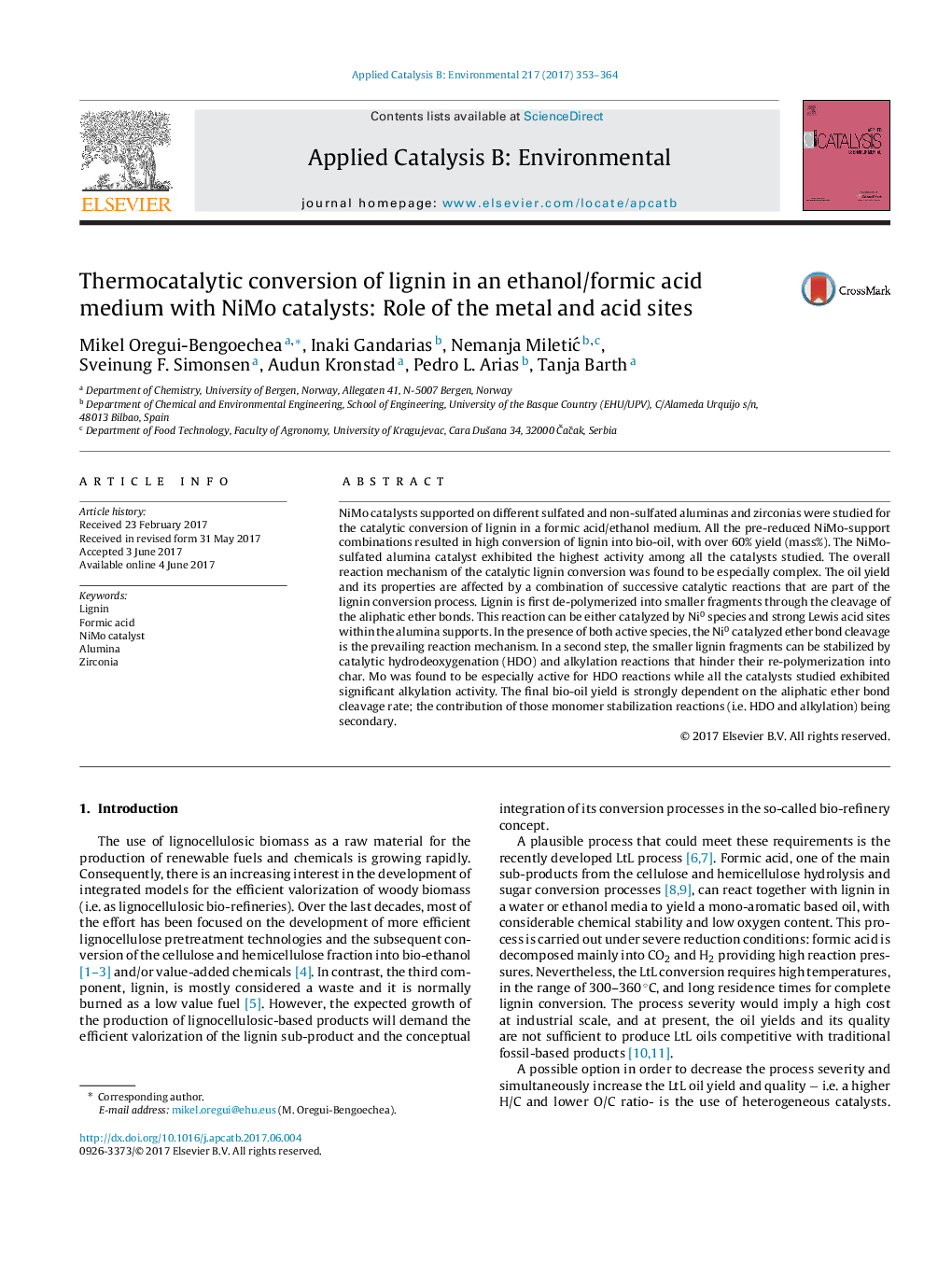| Article ID | Journal | Published Year | Pages | File Type |
|---|---|---|---|---|
| 6453977 | Applied Catalysis B: Environmental | 2017 | 12 Pages |
â¢Lignin de-polymerization contributes more to the oil yield than monomer stabilization.â¢Ni0, Mo and strong Lewis acid sites catalyzed the de-polymerization of lignin.â¢HDO and alkylation reactions stabilize the lignin monomers.â¢Ni0 is more active than Mo and Lewis acidity for the de-polymerization of lignin.â¢Mo is more active than Ni for HDO reactions.
NiMo catalysts supported on different sulfated and non-sulfated aluminas and zirconias were studied for the catalytic conversion of lignin in a formic acid/ethanol medium. All the pre-reduced NiMo-support combinations resulted in high conversion of lignin into bio-oil, with over 60% yield (mass%). The NiMo-sulfated alumina catalyst exhibited the highest activity among all the catalysts studied. The overall reaction mechanism of the catalytic lignin conversion was found to be especially complex. The oil yield and its properties are affected by a combination of successive catalytic reactions that are part of the lignin conversion process. Lignin is first de-polymerized into smaller fragments through the cleavage of the aliphatic ether bonds. This reaction can be either catalyzed by Ni0 species and strong Lewis acid sites within the alumina supports. In the presence of both active species, the Ni0 catalyzed ether bond cleavage is the prevailing reaction mechanism. In a second step, the smaller lignin fragments can be stabilized by catalytic hydrodeoxygenation (HDO) and alkylation reactions that hinder their re-polymerization into char. Mo was found to be especially active for HDO reactions while all the catalysts studied exhibited significant alkylation activity. The final bio-oil yield is strongly dependent on the aliphatic ether bond cleavage rate; the contribution of those monomer stabilization reactions (i.e. HDO and alkylation) being secondary.
Graphical abstractDownload high-res image (176KB)Download full-size image
